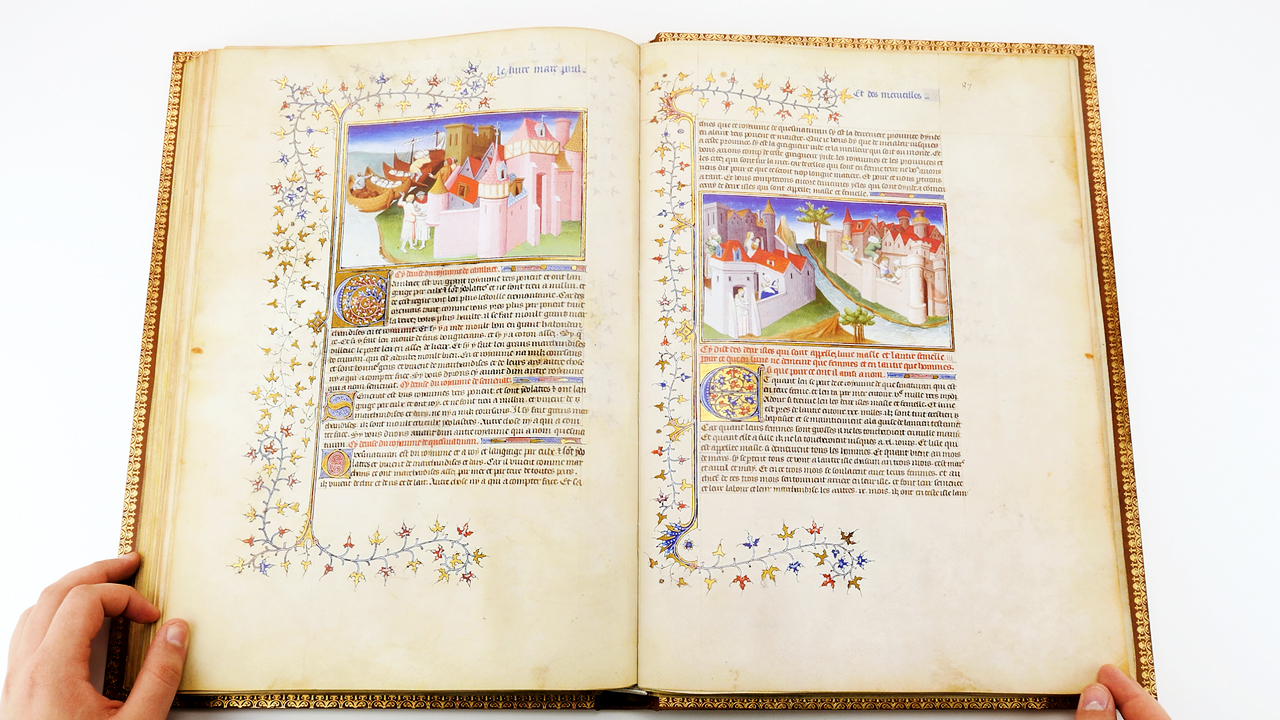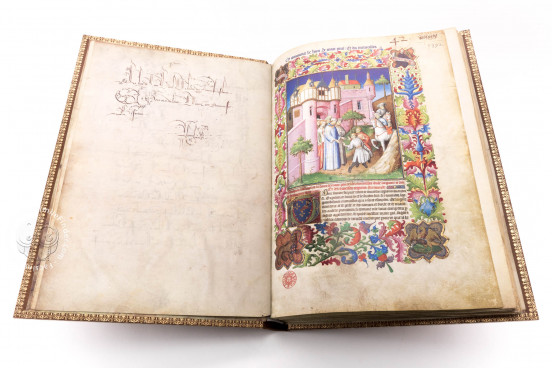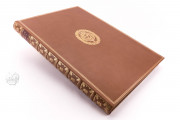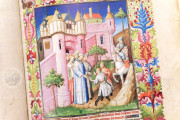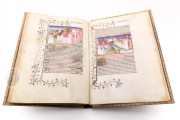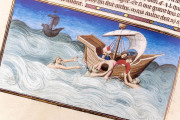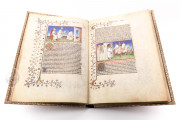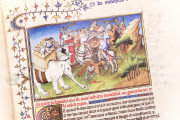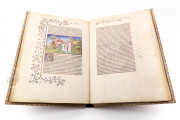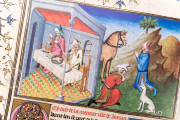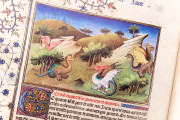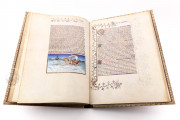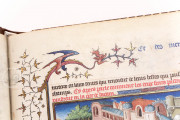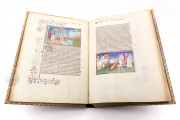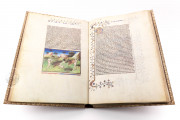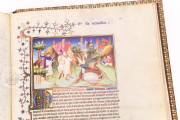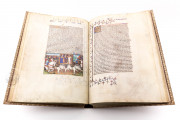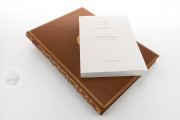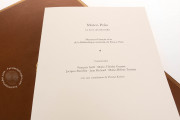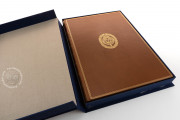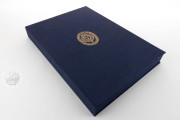The illuminated manuscript on Marco Polo's fascinating and adventurous travels ranks among the most famous manuscripts of the Middle Ages and is considered a highlight of French book decoration. Rarely have secular topics had such an intensive echo.
Marco Polo's reports offered the ideal background for illustration, as people in Europe had always been curious to know about the marvels of the legendary Orient. The most well-known masters of their time steeped the manuscript in enchanting colours and gold, thus creating a unique and lavish testimony to a courageous pioneer's achievements.
Luxurious Miniatures
The 192 pages contain 84 miniatures in a large format which can be ascribed to two different styles: the first one is attributed to the famous Boucicaut Master, one of the greatest innovators among Northern European artists prior to the van Eyck brothers. He was assisted by the so-called Mazarine Master. Together, they are responsible for 37 miniatures.
The second group also fascinates because of the quality and diligence displayed by the artists, who must have worked together in close co-operation. Among them were the Egerton Master and the Bedford Master, who completed 44 miniatures.
Marco Polo's Wondrous Travels
The story which inspired the best book illuminators to this true masterpiece is that of the merchant Marco Polo, whose father and uncle had already travelled to Asia from 1261 to 1269. In 1271 they headed again for this continent taking the young Marco with them.
Their journey took three and a half eventful years during which they covered a great distance, from Palestine to Persia and on to the Persian Gulf, through Pakistan, the Pamirs and on to the North of China. There, the travellers reached the legendary court of the Mongol ruler Kublai Khan.
Speaking a few languages and reading the Mongol script, Marco Polo offered his services to the Khan who soon gained confidence in him. Subsequently, Kublai Khan entrusted Marco with confidential missions which led him through large parts of Eastern Asia but also to some regions of Southern Asia.
Marco Polo had to wait until 1292 to be allowed to travel back to Europe; this time the journey took him across the sea, along the coasts of the Indian Ocean, through Baghdad to Venice where he settled down to lead a normal family life.
Reports on Mysterious Events
During one of the numerous wars between Venice and Genoa, the far-travelled Marco Polo, then commander of a galley, was taken prisoner and had to spend three years in a martello tower in Genoa. There he shared a room with a writer, one Rustichello, who wrote down Marco's fantastic tales in French.
This work has come down to us in a number of different versions and is the first comprehensive geographical and ethnological document on the countries and the peoples of the Orient. It even influenced Columbus who is said to have owned his personal copy of the manuscript.
The Marvels of the Orient
During his travels Marco Polo had taken notes to be able to report to the Grand Khan in detail what he had seen. However, his reports often mention regions that he probably never visited himself.
One of the features that make this book so unique is the fact that in this manuscript, reality and fantasy often combine, and medieval vistas are intertwined with European tradition, legend and lore.
The Destiny of the Manuscript
From the very beginning, this manuscript known as the Book of Wonders has had an eventful history. The initial owner of the manuscript seems to be Jean sans Peur or John the Fearless, Duke of Burgundy.
This is assumed because the luxurious work appears in the inventory of the Duke of Berry where it is registered as a present of the Duke of Burgundy. There are many other symbols and points of reference suggesting that the work was commissioned by John.
After Berry's death the book had been passed on to the Armagnac family, the rest is open to conjecture. After this the codex disappears in the darkness of time and later reappears in the library of King Francis I in the early 16th century. In the late 17th century the manuscript was bound in its actual cover and decorated with the royal arms.
The manuscript is today known also as MS Français 2810, which includes other codices such as The Travels of Jean de Mandeville, and a few others, all related for their subjects which deal with travelling literature. Marco Polo's the Book of Wonders occupies the very first part of the manuscript, that is fols. 1-96v.
We have 1 facsimile edition of the manuscript "Marco Polo - The Book of Wonders": Marco Polo. Das Buch der Wunder facsimile edition, published by Faksimile Verlag, 1995
Request Info / Price
